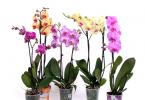The SsangYong Kyron SUV ("Sanjeng Kyron") began to be produced in Korea in 2005. The car stood out for its original appearance, authored by British designer Kenneth Greenley.
The car had a frame structure, the Kyrons for the Korean market had an independent rear suspension and a seven-seat interior, and export versions had a continuous rear axle and five seats in the cabin. The drive is all-wheel drive, with a hard-wired front end and a reduction gear, and rear-wheel drive modifications were also offered in Korea.
Licensed "Mercedes" power units were installed on the SsangYong Kyron: a four-cylinder turbodiesel with a volume of 2.0 liters and a five-cylinder with a volume of 2.7 liters (such cars were not supplied to the Russian market). Gearboxes - five-speed, manual or automatic.

In 2007, the model was restyled: Sanyeng Kyron received a more harmonious design, a slightly modified interior and a 2.3-liter gasoline engine with 150 hp. With. in combination with "mechanics" or a four-speed "automatic". In 2009, some versions of the model began to install a new six-speed automatic transmission.
Chirons for the Russian market have been assembled at the Sollers plant in Naberezhnye Chelny since 2006, and at the end of 2009 production was moved to Vladivostok. Prices for an SUV started at 800 thousand rubles (in 2010).

In Korea, the SsangYong Kyron was discontinued in 2011, and the assembly of cars in Vladivostok continued until 2014 (at the end of the conveyor life, a small batch of mono-drive cars entered the Russian market). A licensed copy of the model was produced in China under the name .
Sanyeng Kyron car engine table
Formally, SsangYong appeared in 1954, when the Ha Dong-hwan Motor Company was founded in South Korea. Initially, the company produced military off-road vehicles. Due to the confrontation between the southern and northern parts of the country, the demand for cars was high, and this stimulated the development of the company. Therefore, the production of civilian vehicles was soon established, which went not only to the domestic market, but also for export. For example, already in 1967, Ha Dong-hwan Motor Company began to export buses to Vietnam.
In 1976, the production of special-purpose vehicles was organized. And in 1977, the company was renamed Dong-A Motor. The development of the enterprise under the new name became even more intensive. In 1979, the construction of a plant in the city of Pyongtek was completed. The company began an active search for new markets. So in 1984, Dong-A Motor began supplying high-speed buses to Libya. Two years later, the company came under the control of Ssangyong Business Group, and in 1988 changed its name to SsangYong Motor. By the way, SsangYong translates as "Two Dragons". At this stage, a decision was made to acquire Geohwa Motors, a company specializing in the production of SUVs. It is not surprising that in 1988 the four-wheel drive Corando Family went on sale, which brought the company world fame. By the way, a year earlier, a department of advanced developments was created in Pyongtek.
SsangYong Family
In the early nineties, a strategic alliance was concluded with Mercedes-Benz AG, the purpose of which was to create small commercial vehicles. This resulted in a huge investment being poured into the Korean company. And in 1992, the export of classic Kallista sports cars began.

SsangYong Kallista
And with Mercedes-Benz AG signed a strategic agreement on cooperation in the development of gasoline engines. A year later, a deal was concluded to sell a 5% stake in SsangYong to Mercedes-Benz AG, after which a plan was drawn up for the joint development of large commercial vehicles and diesel engines. In the same year saw the light of the first SsangYong Musso.

SsangYong Musso
In 1994, a motor factory was opened in Changwon. Since 1995, a logistics center has been operating to ensure the supply of spare parts. Rolling off the assembly line are the first Istana small commercial vehicles, a joint project with Mercedes-Benz known as a variation on the MB100 theme.

SsangYong Istana
The following year, the company began to produce another car - New Korando. The car was in demand mainly due to its low price and excellent reliability. Therefore, it was actively exported.

SsangYong Korando
Since 1997, when mass production of passenger cars was launched, SsangYong has occupied a new niche in the automotive industry. Then the company introduced the SsangYong Chairman, a business-class car. It was equipped with a V-shaped six and was based on an elongated Mercedes E-class platform.

SsangYong Chairman
During the economic crisis, SsangYong Motor had to come under the control of the Daewoo group. In 1998, the final merger with the Daewoo Group took place. And by 2000, after a successful corporate reorganization, the company regained its independence, separated from Daewoo. After that, special attention was paid to development, research and design in SsangYong. At the same time, the management tried to recreate the sales network and warranty service programs.
In 2000, the new model Chairman CM500 was introduced to the world. A year later, the Korando model won the Energy Winner 2001 award. At the same time, the production of the Rexton premium SUV was launched and the production of the SsangYong Musso Sports pickup truck began. The revival of SsangYong was illustrated by the opening of its own technical center in China.
Since 2003, the production of the New Chairman executive sedan and the New SsangYong Rexton SUV with a diesel engine has been launched.

SsangYong Rexton
The following year, the company launched the multifunctional 11-seater minivan SsangYong Rodius.

SsangYong Rodius
In Australia and some other countries, this car was sold under the name Stavic. At the same time, SsangYong received new investments: more than half of its shares were bought by the Chinese SAIC Motor. 2006 was marked by the debut of two more new models: the Actyon crossover and the Actyon Sports pickup.

SsangYong Actyon

SsangYong Actyon Sports
Korando, Musso, Rexton cars have been supplied to the Russian market since the late 1990s. At the end of 2005, the production of Rexton SUVs began at the ZMA plant in Naberezhnye Chelny, owned by Severstal-Auto (Sollers brand). Starting from the end of 2006, the assembly of the SsangYong Kyron was also launched at the plant, and then the SsangYong Actyon. Currently, the SsangYong Rexton and SsangYong Kyron models have a full production cycle, including welding and body painting.

SsangYong Kyron
Since December 2009, SsangYong models have also been produced in the Far East. The total investment in this project amounted to 5 billion rubles. Since 2010, the South Korean automaker SsangYong Motor has been owned by the Indian company Mahindra & Mahindra.
Established in 1954, Korea's leading brand is known for its cutting-edge design and excellent performance, which is made possible by the company's strong engineering team.
In the 1980s, the company entered the four-wheel-drive era with its own development of the Musso and Korando models. Since 2000, SsangYong has established itself as a leading SUV manufacturer with a full line of crossovers and SUVs including the Rexton, Korando, Korando Sports, Tivoli and XLV.
1983 KORANDO

2017 KORANDO
Breaking new ground in the luxury sedan market, the Chairman has become the country's leading vehicle in its class. An upgraded version, the Chairman W, was also recently made available. This is Korea's first luxury car with a 5,000cc 8-cylinder V-twin engine and a 7-speed automatic transmission. Currently, the Chairman W is the flagship in the Korean market and competes with leading luxury cars around the world.
The environmentally friendly Korando compact SUV is the first front-wheel drive monocoque vehicle in the SsangYong Motor lineup. Korando, which marked the beginning of a new phase for the entire line of the company, is the first Korean brand that has been known for such a long time in the global SUV market.
SsangYong Motor has contributed to the development of environmentally friendly diesel technology based on an advanced common rail engine. The company has focused on strengthening its competitive edge and is launching the eXDi200 compact, eco-friendly Euro 5 engines and is developing a new range of engines that will meet the Euro 6 standard.
Through its customer-centric global policy, SsangYong Motor is increasingly expanding its presence in the global market. SsangYong Motor SUVs are sold in 1,645 sales outlets in over 126 countries.
Moreover, the company is strengthening its presence on the global stage by opening offices in key markets. As a confirmation of its intentions, the company has opened central offices, as well as distribution centers in strategically important places in Europe, which set the tone for modern automotive industry.
In order to ensure sustainable growth, SsangYong Motor Company is betting not only on developed and mature markets, but also on the emerging markets of Central America and Eastern Europe, and even plans to enter India and China, the largest automotive markets in the world.
In an effort to achieve only the best results, SsangYong Motor is committed to the development of new design and technology, improving driving performance and reflecting the company's unique identity. In addition, by focusing on a powerful SUV lineup, SsangYong will be able to further strengthen its position in this market through technical cooperation with Mahindra & Mahindra, which also specializes in SUVs.
* In Russia, the model is called SsangYong Actyon.
Ha Dong-hwan Motor Co., Ltd. is founded in Korea.
The company becomes Korea's first bus exporter to Vietnam.
Start of technical cooperation with the joint venture of American Motors Corporation (American Automobile Corporation), which is the ancestor of Jeep compact SUVs, and Shinjin Jeep Motor Co., Ltd.
Together with AMC and Shinjin jeep Motor Co., Ltd. the development of the first SUVs in Korea - SsangYong Korando, which was a licensed copy of the Jeep CJ-7, with a hard and soft top. The name Korando is short for "Korea Can Do".
The production of special-purpose vehicles (snowplows, dump trucks with trailers, etc.) has been launched.
Change of corporate name to Dong-A Motor Co., Ltd.
Diesel models of SUVs for 4.5 and 6 seats have been developed.
Completed construction of an automobile plant in Pyeongtaek, Korea.
The company became the official supplier of the national defense industry of South Korea.
Dong-A Motor acquires the trademark "KORANDO" from Geohwa Co., Ltd (formerly Shinjin Jeep Motor). Production of the second generation of the Korando SUV has begun.
Dong-A Motor buys out a majority stake in Geohwa.
Geohwa production facilities from Busan moved to Pyeongtek.
Korando has been exported to Japan.
The management of the company begins SsangYong Group.
Established a research and development center at the plant in Pyongtek, Korea.
SsangYong Group has acquired the British company PANTHER CAR.
Start of export of Korando to Northern Europe.
Company name changed to SsangYong Motor.
SUVs with an extended base Korando Family go on sale.
The logo has changed.
A strategic alliance has been concluded with Mercedes-Benz AG, which is part of the Daimler-Benz AG concern, the purpose of which is to create small-sized commercial vehicles.
The export of Panther Kallista classic sports cars has begun.
A strategic cooperation agreement has been signed with Mercedes-Benz AG in the development of gasoline engines.
The production of SsangYong Musso, an all-wheel drive SUV, has started.
A deal was concluded to sell a 5% stake in SsangYong to Mercedes-Benz AG.
An agreement was signed with Mercedes-Benz AG on the joint development of diesel engines.
Completed the construction of an engine manufacturing plant in Changwon, Korea.
Launch of the second generation Korando family into production.
Istana's first small commercial vehicles roll off the assembly line.
SsangYong became the first Korean automaker to receive ISO certification for its models.
The third generation SsangYong Korando is introduced.
The luxurious executive class sedan Chairman was introduced to the Korean market.
Merger with Daewoo Group.
The updated SsangYong Musso is presented.
A seven-seater version of the SsangYong Musso model is presented.
A major internal corporate reorganization was carried out.
SsangYong is releasing an update to the Chairman CM500.
End of cooperation with Daewoo Group.
The Korando brand receives the "Energy Winner 2001" award, founded by the non-governmental organization "Consumers of Korea" and supported by the Ministry of Trade, Industry and Energy, the Ministry of Ecology.
In Korea, updated Musso, Korando and Istana are presented.
For the third year in a row, Musso has become the leader in the SUV segment as part of the Brand Power award.
The 500,000th engine was produced at the Changwon plant.
Rexton, a premium SUV, appears on sale.
The functional SsangYong Musso Sports pickup is launched.
SsangYong is recognized as the best company in terms of customer satisfaction.
SsangYong received the "Best Enterprise Management Company" award.
SsangYong received the Prime Minister's Award for Promotion Technology.
SsangYong Motor Company is a South Korean auto manufacturer (passenger cars) headquartered in Seoul. Sang Yong, translated into Russian, means "two dragons", the company ranks third among Korean automakers in terms of the number of cars sold.
October 1954 is considered to be the official founding date for the history of SsangYong, at the time of its inception, the company received the name Hadonghwan Motor Company. The first products of the automaker were licensed Willys (army off-road vehicles) supplied to the South Korean army. Thanks to the constant orders of the military, the Sanyeng company (there are also transcriptions of Sang Yong, Saneng or Ssangyong) quickly achieved financial success and gradually expanded the range of manufactured equipment. In the 1960s and 1970s, the enterprise managed to launch the production of trucks, buses and special-purpose equipment.
In 1967, through partnership with Shinjin jeep Motor Co., Ltd. contracts for the supply of buses to Vietnam.
In 1974, Hadonghwan Motor Company becomes a co-owner of Motor Shinjin jeep.
In 1976, the company changes its name to Dong-A Motor. The development of new off-road vehicles designed to carry 4-6 people using diesel engines is underway.
In 1979, the opening of a new car assembly plant in the city of Pyongtek.
In 1983, the purchase of the trademark "Korando" from Geohwa Co., Ltd, followed by the takeover of Geohwa.
In 1986, Dong-A Motor is taken over by Ssangyong Business Group, and in 1988 receives its current name SsangYong Motor. The Korando Family appears in the lineup - created on the platform of the Japanese Isuzu Trooper.
In 1991, SsangYong enterprises entered into an agreement on technical cooperation with Mercedes-Benz AG (development of new gasoline engines).
In 1993, Mercedes-Benz AG became one of the main shareholders of Ssang Yong Motors, the second co-owner is the Chinese company SAIC Motor. Mercedes AG and Sanyeng Motors enter into a technical union. At this stage in the history of the SsangYong company, all cars are produced under the supervision of Mercedes-Benz representatives.
SsangYong vehicles use engines, gearboxes, and many of the designs and technologies of the German automotive giant. Start of production of the SsangYong Musso SUV.
In 1995, sales of Korean Sang Yong cars began in Europe, the first-born was the Istana model - an exact copy of the Mercedes-Benz MB 100 minibus, produced from 1988 to 1995.
In 1996, a new Korando appears, the company certifies its products according to international ISO standards.
In 1997, the executive sedan Chairman, built on the basis of the Mercedes-Benz W124, appears in the Sanyeng lineup.
In 1998, the company comes under the control of the Daewoo Group, but not for long. Two years later, in 2000, Ssang Yong is again an independent structure.
In 2001, the production of the Rexton off-road novelty starts.
In 2002, the SsangYong Musso Sports pickup truck was launched into mass production.
In 2003, a new generation of the Chairman sedan and the Rodius minivan appeared with a design that caused much controversy.
In 2005, the SsangYong Kyron SUV debuted.
In 2006, another novelty Sang Yong Actyon.
In 2008, the premiere of the first crossover in the SsangYong lineup - C200 Concept (only two years later, after changing the name to Korando, the car will reach buyers). In the same year, the company's management declared bankruptcy; after the restructuring, the company was put up for sale. On August 12, 2012, SsangYong Motor was acquired by the Indian concern Mahindra & Mahindra Limited.
The production of Sanyeng SUVs for Russian buyers is carried out at the Sollers factories in Naberezhnye Chelny and Vladivostok.
Today, in Russia and the CIS countries, Ssang Yong cars are in steady demand. The following models of the Korean-Indian manufacturer are available in Russian car dealerships: Actyon, Kyron, Rexton and the Actyon Sport pickup truck.
Korando (twin of the Russian Actyon), Actyon and Actyon Sports, New Actyon Sports, New Kyron and Rexton II are available to Ukrainian buyers. Perhaps in the near future, SsangYong executive sedans will be added to Korean SUVs sold in the post-Soviet space.
Sun Yong is a Korean automobile manufacturer and is the fourth largest passenger car manufacturer in Korea. The company's headquarters is located in the Korean city of Seoul. The name Sanyeng itself means "two dragons", and literally translates as "pair".
The company was founded in 1954, at that time it was called Ha Dong-hwan Motor Company, it began its activities with the production of jeeps for the army. From 1977, the name was changed to Dong-A Motor. Then the company ye expanded its activities and produced special equipment, trucks and buses.
Since 1986, it has been under the direct control of the Ssangyong Business Group, and since 1988 the company's name has been referred to as SsangYong Motor. In the same year, 1988, sales of the Korando Family SUV began. Since 1991, cooperation with Daimler-Benz began. When production of the Musso SUV began in 1993, at the same time, Daimler-Benz Corporation acquired a 5% stake in SsangYong Motor. Another major Korean automaker, Daewoo Motors, bought a majority stake in 1997. With the onset of the financial crisis in 2000, Daewoo was forced to sell its stake. In the winter of 2008, the company declared bankruptcy.
Until 2009, the SAIC Motor Automobile Corporation owned a 51% stake in SsangYong Motor Company. During bankruptcy...
San Yong is a Korean automobile manufacturer and is the fourth largest passenger car manufacturer in Korea. The company's headquarters is located in the Korean city of Seoul. The name itself Sanyeng means "two dragons", and literally translates as "pair".
The company was founded in 1954, at that time it was called Ha Dong-hwan Motor Company, she began her activity with the production of jeeps for the army. Since 1977 the name has been changed to Dong-A Motor. Then the company expanded its activities and produced special equipment, trucks and buses.
Since 1986, it has been under the direct control of Ssangyong Business Group, and since 1988 the company's name has already been referred to as ssangyong motor. In the same year, 1988, sales of the Korando Family SUV began. Since 1991, cooperation with Daimler-Benz began. When production of the Musso SUV began in 1993, Daimler-Benz acquired a 5% stake in SsangYong Motor at the same time. Daewoo Motors, another major Korean automaker, bought a majority stake in 1997. With the onset of the financial crisis in 2000, Daewoo was forced to sell its stake. In the winter of 2008, the company declared bankruptcy.
Until 2009, the SAIC Motor Automobile Corporation owned 51% of the shares of SsangYong Motor Company. During the February 2009 bankruptcy of SsangYong, China's SAIC Motor had already lost its full control of the company. By May 2010, the media reported on the sale of the concern, and the Russian Sollers and the French Renault were among the main contenders for the purchase.
In the summer of 2010, it became known that Mahindra & Mahindra, one of the automotive divisions of an industrial holding in India, Mahindra Group, was chosen as a suitable candidate for the purchase of SsangYong Motor. SsangYong also said in a statement that the main criteria for stopping the Indian buyer were the purchase price, job security for all employees of the South Korean company and further plans for managing the company. The purchase of a controlling stake by an Indian holding took place in November 2010. The Indians paid $463.6 million for 70% of the shares.
To Russia cars ssangyong began to be delivered in the late nineties. Since 2004, the Sollers automobile company has been representing the interests of SsangYong Motor in Russia. In Naberezhnye Chelny, since 2005, the assembly of SsangYong Rexton cars began at the Sollers enterprise, in 2006 they began to assemble the Kyron model, and a little later, the Actyon model. Now the assembly of cars at the plant in Naberezhnye Chelny has been stopped, but since 2009 it has been launched at a plant in the Far East.



